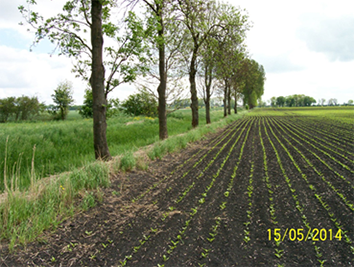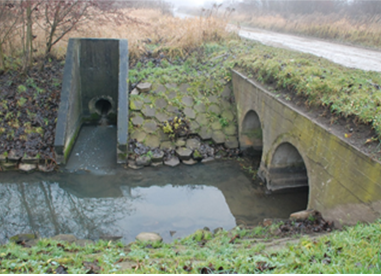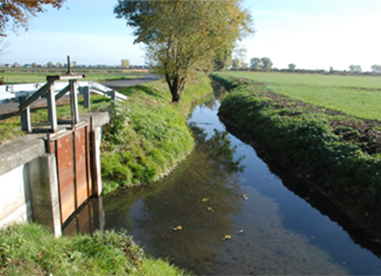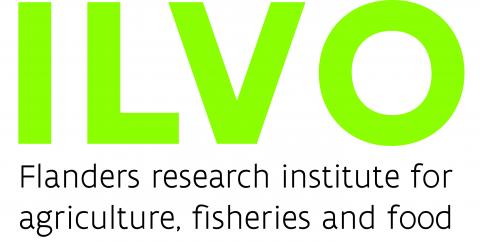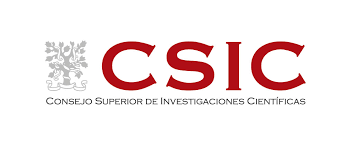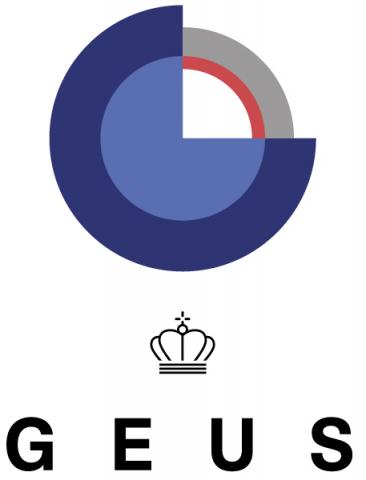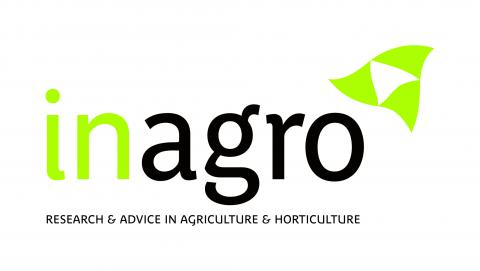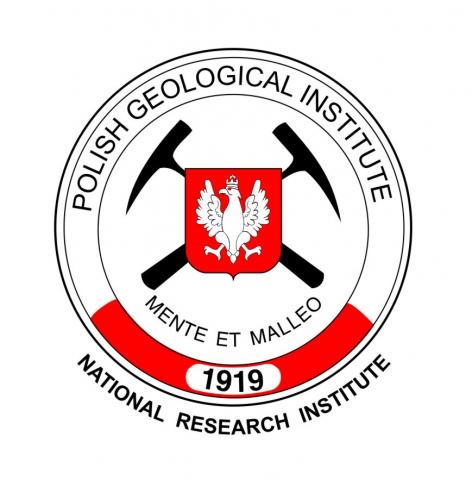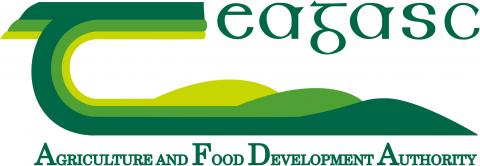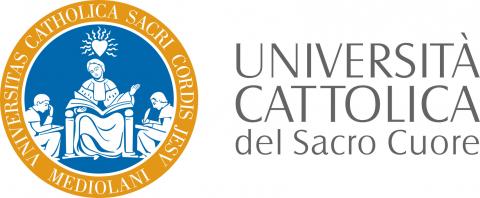Local challenges and water contaminants
As mentioned above nearly 96% of the area is agricultural land. In recent years large scale producers use monocultures and grow industrial plants (eg corn) using very high doses of fertilizers and pesticides, causing high risk for environment, especially water quality. Animal husbandry is also carried out in the catchment area with domination of cattle and pig breed. Manure and slurry handling and storage is still not well solved on some farms. Recently, the use of various types of wastes (eg biogas plant waste) as natural fertilizers became a serious problem.
Gowienica catchment was one of the first areas to be included in the Nitrate Vulnerable Zone designation in 2004 in our region.
Systematically identified pollution in surface, ground waters in the area of the Gowienica basin is NO3-, NH4+, PO43-, conductivity and K+ content. Current studies indicate that the average amount of pollutant load associated with the waters of the Gowienica into Miedwie depends on precipitation and is about NO3- 18.0 T/year, NH4+ about 0.48 T/year, K about 23.6 T/year and PO43- from 0.48 to even a few tonnes per year.
The waters of the river are contaminated already at its source, they undergo a certain self-purification, but subsequent point-source discharges of water from the tributaries significantly reduce the quality of the surface water. Studies show that the waters and soils are additionally polluted with nutrients from atmospheric precipitation, which further contributes to soil degradation and accelerated leaching of fertilizers from soil when rainfall is acidic.
Studies also showed water pollution of individual wells with the nutrients and sulphates, chlorides, manganese, zinc and iron. As the main threats to water quality in the catchment area, there are identified area contaminants associated with intensive agricultural production (mineral fertilization), as well as point sources such as livestock manure storage and unregulated wastewater management in some localities and farms (no sewerage, leaky septic tanks, uncontrolled export of filthiness).
In the years of 1994-1997, a number of investments related to the equipment of farm parts were implemented in the necessary infrastructure in the form of manure water tanks and manure gutters. In spite of these activities conducted in surface water and groundwater, the pollution was observed-periodically nitrates > 50 mg / l, the concentration of which according to the Nitrates Directive has qualified the catchment area as Nitrate Vulnerable Zone in 2004-2016.
High phosphate concentrations persist especially in surface waters indicating eutrophication hazard and NH4+ ion associated with the inflow of "fresh" pollutants. Planned monitoring of catchment environmental parameters associated with the determination of surface water quality (including isotopic origin recognition of selected components) and groundwater as well as dry and wet precipitation and soil fertility will make it possible to identify the actual causes of poor water quality in the catchment area.

